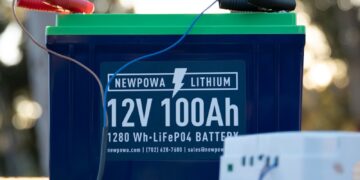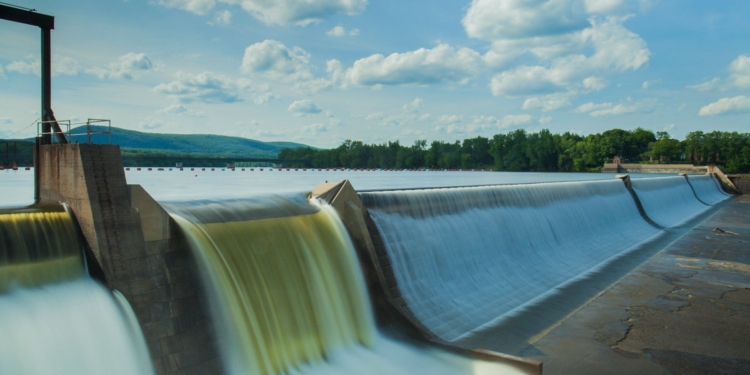The global energy transition is well underway. The days of relying on fossil fuels—coal, oil, and gas—are drawing to a close. These energy sources are not only finite and increasingly expensive to extract but also responsible for some of the most damaging consequences of climate change, from rising sea levels to severe weather events and public health crises.
In their place, a new generation of clean, renewable energy sources is rapidly emerging. These alternatives are not only more sustainable and environmentally friendly, but in many cases, they are now cheaper than fossil fuels. According to the International Renewable Energy Agency (IRENA), renewable power has become the most cost-effective option for new electricity generation in many parts of the world.
Below, we explore five major types of renewable energy, how they work, where they are thriving, and why they are vital for creating a resilient, low-carbon global economy.
1. Solar Energy
Solar power harnesses energy from the sun through photovoltaic (PV) cells or solar thermal collectors. It’s the most abundant renewable energy resource available—and increasingly, one of the most accessible. Since 2010, the cost of solar panels has fallen by more than 90%, making solar the cheapest form of new electricity across much of the world.
Solar energy offers both grid-scale and off-grid solutions, making it especially valuable for rural or remote regions without traditional infrastructure. In Sub-Saharan Africa, small-scale solar home systems are bringing reliable electricity to communities for the first time. In Puerto Rico, solar microgrids are helping neighborhoods maintain power during frequent hurricanes and outages.
Meanwhile, China now produces nearly 78% of the world’s solar panels, with exports accelerating the clean energy shift in countries like Pakistan, where solar installations are helping mitigate rolling blackouts.
Solar energy supported 4.9 million jobs globally in 2022, and that number is expected to grow rapidly, particularly in the United States, India, and Latin America.
Why it matters: Solar energy is highly scalable, adaptable to rooftops, utility-scale farms, or microgrids, and represents the most inclusive path to global energy equity.
2. Wind Energy
Wind energy converts the kinetic energy of moving air into electricity through wind turbines. It’s a mature, proven technology and a leading source of zero-emission power in both developed and developing economies. Wind is especially effective in regions with consistent high-speed wind currents, such as coastlines, plains, and hilltops.
Countries like Denmark and Uruguay now source over 50% and 90% of their electricity from wind, respectively. In North America, community wind projects—such as those in Summerside, Canada—are allowing municipalities to reinvest profits locally while enhancing energy independence.
Offshore wind farms, which leverage stronger and more consistent sea breezes, are rapidly expanding. The UK, China, and the U.S. are investing heavily in offshore development to reduce grid congestion and meet climate goals.
According to BloombergNEF, global wind capacity is expected to grow more than tenfold by 2050.
Challenges and considerations: Wind turbines can face local opposition due to visual impact and land use, and offshore wind requires careful marine planning. But with appropriate siting and stakeholder engagement, wind remains a cornerstone of clean energy strategy.
3. Hydropower
Hydropower generates electricity by capturing the energy of flowing or falling water—usually through dams or run-of-river systems. It is the largest source of renewable electricity globally, particularly in regions with abundant water resources.
Countries like Brazil, Nepal, and Norway rely on hydropower for more than 90% of their electricity needs. Hydropower offers consistent base-load power and often includes energy storage capacity via reservoirs.
However, large dams can have serious environmental and social consequences, including river disruption, fish habitat loss, and community displacement. In the United States, an increasing number of obsolete dams are being dismantled to restore natural ecosystems and reduce flood risks. The American Rivers organization is leading these efforts across the Pacific Northwest and Appalachian regions.
Micro-hydro systems present an alternative for rural and mountainous communities, especially in parts of Indonesia and East Africa, where smaller-scale turbines are installed in local streams without large infrastructure or ecological damage.
Looking ahead: With climate change altering hydrological patterns, future hydropower strategies must balance energy needs with ecological integrity and climate resilience.
4. Geothermal Energy
Geothermal energy taps into the Earth’s internal heat, often through wells that bring hot water or steam to the surface to generate electricity or provide direct heating. It’s one of the few renewable energy sources capable of delivering baseload power 24/7, regardless of weather conditions.
Iceland leads the world in geothermal development, using it to heat over 90% of homes and generate a significant portion of its electricity. Kenya has become a geothermal powerhouse in Africa, with projects like Olkaria supplying over 40% of the national grid.
While geothermal plants produce minimal emissions, they must be carefully located to avoid groundwater contamination and manage seismic risks. Enhanced geothermal systems (EGS), a newer technology, could unlock geothermal’s potential in non-volcanic regions by fracturing hot rock layers—but these systems are still being researched and regulated.
Opportunity: With proper oversight, geothermal could be a game-changer for clean heating and electricity in areas with geothermal potential.
5. Biomass Energy
Biomass energy involves burning organic matter—such as wood, agricultural waste, or animal manure—to generate electricity or heat. It’s often considered a “bridge” fuel in the energy transition due to its ability to use existing infrastructure and offer dispatchable power.
In India, small-scale biogas systems are helping rural families cook without firewood, improving indoor air quality and reducing deforestation. These digesters turn livestock waste into methane, which is burned for heat and electricity.
However, large-scale biomass, particularly wood pellet plants in the United States and Europe, have raised major concerns. Research shows that biomass can emit more carbon than coal over its lifecycle and contribute to deforestation in biodiverse regions like the Southeastern U.S. and the Amazon.
Best practices: Biomass must be sustainably sourced, transparently accounted for in emissions reporting, and limited to waste byproducts or closed-loop systems to avoid unintended harm.
Why Renewable Energy Must Be Community-Centered
A clean energy future isn’t just about carbon reduction—it’s about building a fairer world. When communities are involved in planning, decision-making, and profit-sharing, the benefits of renewable energy multiply. Local ownership leads to better outcomes for resilience, affordability, and public health.
Take the example of Pacifico Energy, a U.S.-based firm offering Energy-as-a-Service solutions across North America. Pacifico works directly with food distributors, manufacturers, and data centers to deploy hybrid solar-battery systems tailored to each site’s needs—often at zero upfront cost. Learn more about how Pacifico can help your company cut energy costs and emissions with a free site assessment.
Conclusion: A Future Within Reach
The transition to renewable energy is no longer optional—it’s urgent and inevitable. From solar panels in Puerto Rico to wind farms in Denmark, communities are proving that cleaner, smarter energy is possible today.
But the speed and fairness of this transition depend on smart policies, responsible development, and community-first thinking. Renewable energy can help us decarbonize the grid, electrify transportation, reduce pollution, and create millions of new jobs—if we get it right.
Want to be part of the solution?
🔹 If you’re a sustainability leader, energy buyer, or business owner—connect with Pacifico Energy for a strategic partnership.
🔹 If you’re an influencer, journalist, or student—share this article and advocate for clean energy in your network.
🔹 If you’re a policymaker—push for incentives that make renewables the default option in every zip code.
The future of energy is renewable. And it’s already here.
📚 Sources:
- IRENA – Renewable Energy Statistics
- USGS – Hydropower
- Ember – Global Electricity Review 2024
- Southern Environmental Law Center – Biomass Energy
- Eurelectric – Geothermal Explained
- Mongabay – Biomass Deforestation Report
- Pacifico Energy – Energy-as-a-Service



















